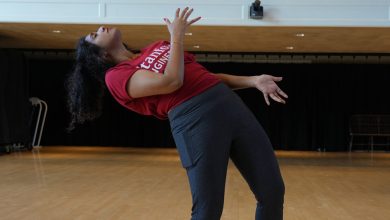High-income countries in Asia have the least active populations in the world

Globally, the highest rate of physical inactivity was observed in the high-income Asia-Pacific region (48%), according to a report released in June by the World Health Organization.
Andreswd | E+ | Getty Images
It’s no secret that leading a healthy lifestyle requires regular and adequate exercise, but worldwide, many adults are lacking this activity.
Nearly a third of the world’s adult population, or about 1.8 billion people, did not meet recommended levels of physical activity by 2022, according to a June 2024 report from the World Health Organization.
According to WHO standards, 150 minutes of moderate-intensity physical activity, 75 minutes of vigorous-intensity physical activity or equivalent per week are recommended for adults.
People are increasingly working on electronic devices, computers, (and are) often sedentary because they are sending emails rather than having physical conversations… so we don’t travel as much between meetings.
Fiona Bull
Head of the WHO Physical Activity Unit

The highest prevalence of physical inactivity was observed in the high-income Asia-Pacific region (48%), which includes South Korea, Japan and Singapore. This is closely followed by the South Asia region (45%), which includes Afghanistan, Bangladesh, Bhutan, India, Nepal, Pakistan and Sri Lanka.
“Asia is home to about 30% of the world’s population, but we bear almost 50% of the global disease burden. We have more diabetics, more cancer patients, more cardiovascular patients than anywhere else in the world,” Abrar Mir, co-founder of Quadria Capital, said on “Squawk Box Asia” on Monday.
Women have on average a higher rate of physical inactivity (34%) than men (29%). This gap is particularly marked in South Asia, where women’s physical inactivity rate is 14 percentage points higher than men’s, according to the report published in The Lancet Global Health.
“Physical activity levels are determined by a range of factors,” says Fiona Bull, head of the WHO Physical Activity Unit. These include personal motivation, time availability, as well as social and environmental factors such as the habits of those around us and the temperature and climate of the region.
“Women have multiple roles. They still take on the lion’s share of family and home care responsibilities, which can mean they have less time (especially if they) also work,” Bull said.
“And of course, for certain populations, particularly women and older people… it may be tied to cultural and societal values,” Bull said.
The key to being more active is to do things you enjoy.
Fiona Bull
Head of the WHO Physical Activity Unit
Bull says children and teens may be forced to focus on school, leaving them less time to exercise, and some of these habits can carry over into adulthood.
There is no single reason why some regions and groups are more physically active than others.
It is the government’s responsibility to create policy and commit the resources necessary to prioritize and promote the health and well-being of its people, Bull said.
It is important that governments provide the necessary funding to create and maintain safe, clean, well-lit and accessible public spaces that local communities can use for exercise, she suggested.
Risks associated with physical inactivity
People have generally become less active since 2000, with the prevalence of physical inactivity among adults globally increasing to 31.3% in 2022, from 26.4% in 2010 and 23.4% in 2000, according to the study, which drew on 507 surveys in 163 countries and territories.
This can be partly explained by the massive adoption of technology in recent decades.
“People are increasingly working on electronic devices, computers, (and are) often sedentary because they’re sending emails rather than having physical conversations… so we’re not traveling as much between meetings,” Bull said.
This lack of exercise increases the risk of cardiovascular disease, cancer, diabetes and other noncommunicable diseases, which are the “leading cause of premature death in the world today,” claiming more than 10 million lives each year, Bull said.
Physical activity can also delay the onset of dementia, according to Bull. Dementia is currently one of the leading causes of death among older people, and as the global older population continues to grow, the number of people with dementia is expected to reach 78 million by 2030, according to the WHO.
“Physical activity prevents some chronic diseases and promotes good mental health and well-being,” Bull said. From improving mood and cognition to boosting learning in children, getting enough physical activity is essential for good health.
Tips for becoming more active
“The key to being more active is doing things you enjoy,” Bull said.
“I recommend that everyone try new activities,” she said. “Especially for adults who are in their mid-life and recognize that they need to be more active,” finding sports that they enjoy can be a huge part of staying healthy.
For example, a game like pickleball may be more accessible than tennis and can be played by your whole family, she suggested.
“Having that support and that enjoyment that you get from being with people is a real motivator… and then it will become a habit, and then you will start to feel the benefits, and it will reward you to keep going and do more,” she said.
Want to earn extra money outside of your day job? Sign up for New Online Course from CNBC: How to Earn Passive Income Online to learn about common passive income streams, tips for getting started, and real-life success stories.
More, Sign up for the CNBC Make It newsletter for tips and tricks on how to succeed at work, with money and in life.





